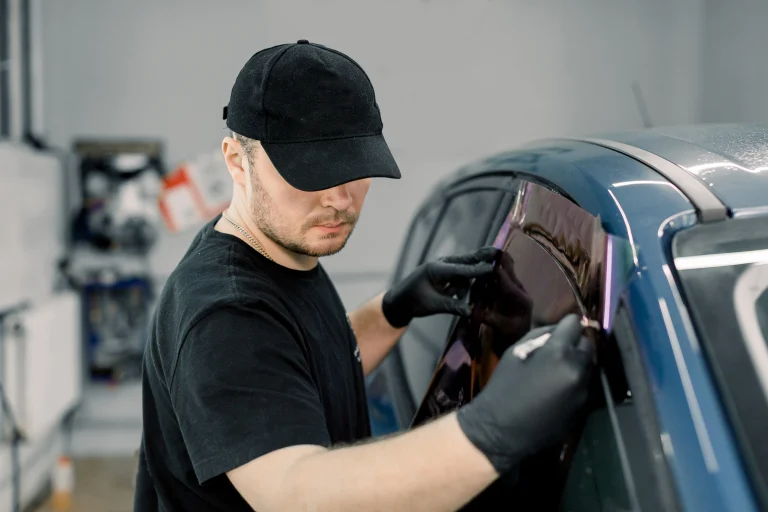How Long Does It Take To Get A CDL?
Understanding What a CDL License Is?
Are you interested in pursuing a career as a professional truck driver? If that’s the case, you will need to get a CDL or commercial driver’s license. This particular license is a requirement for anyone who wants to operate a commercial vehicle, such as a semi-truck or a bus. But what exactly is a CDL license, and why is it important?
A CDL license is a credential that allows you to operate commercial vehicles for hire legally. It is divided into different classes, with Class A being the most comprehensive, allowing you to operate the broadest range of vehicles. With a Class A CDL, you can drive tractor-trailers, straight trucks, and other large commercial vehicles.
Having a CDL license opens up numerous employment opportunities. Truck driving is a high-demand occupation, and there is always a need for qualified and licensed commercial drivers. With a CDL, you can work for trucking companies, delivery services, and construction companies or even become an owner-operator.
To get a CDL license, you must go through a series of steps, including meeting specific requirements, passing a written knowledge test, completing mandated CDL training, and completing a skills test. It may seem overwhelming at first, but obtaining a CDL license can be a smooth process with proper preparation and guidance.
So, if you’re ready to start a rewarding career in the transportation industry, it’s time to get a CDL. Stay tuned as we dive deeper into the steps and requirements in this blog post’s following sections.
What is a CDL?
A Commercial Driver’s License (CDL) is a special type of driver’s license required in the United States to operate large and heavy vehicles, such as:
- Trucks
- Buses
- Vehicles that transport hazardous materials
- Vehicles that carry more than 15 passengers (including the driver)
Essentially, if you want to drive a commercial motor vehicle for a living, you need a CDL
How long does it take to get your CDL license?
The time it takes to get a CDL typically ranges from 3 to 7 weeks. However, this can vary significantly depending on several factors:
- Type of CDL: The specific type of CDL (Class A, B, or C) and any endorsements you need will influence the training time.
- Training method: Attending a full-time CDL training program is generally faster than part-time or self-study.
- Practice driving: The more practice you get, the quicker you’ll be ready for the road test.
- Testing availability: Delays in scheduling your knowledge or road test can extend the overall process.
Factors That Affect the Time Frame for Obtaining a CDL
he time it takes to obtain a Commercial Driver’s License (CDL) can vary significantly based on several factors:
Training Method
- Full-time CDL training programs: Typically shorter, around 3-4 weeks.
- Part-time CDL training programs: Can extend the process to 5 weeks or longer.
- Self-study: Often the longest option, depending on individual learning pace and resources.
Type of CDL
- Class A, B, or C: Each class requires different levels of training and testing.
- Endorsements: Additional endorsements (hazardous materials, passenger transport, etc.) necessitate extra training time.
Practice Driving
- Hands-on experience: More practice generally leads to quicker proficiency and test readiness.
Testing Availability
- Exam scheduling: Delays in scheduling knowledge or road tests can extend the overall process.
Personal Factors
- Learning ability: Individual learning pace affects training duration.
- Previous driving experience: Prior experience with large vehicles can accelerate learning.
State-Specific Regulations
- Additional requirements: Some states have specific rules or testing procedures that can impact the timeline.
Background Checks
- Legal issues: DUI convictions or other legal problems may require additional time for background checks and potential restrictions.
The Benefits of Having a CDL License
A Commercial Driver’s License (CDL) opens up a world of opportunities. Here are some of the key advantages:
Career Opportunities
- High Demand: The trucking industry consistently experiences a shortage of qualified drivers, ensuring job security.
- Diverse Roles: CDL holders can work in various fields, including over-the-road trucking, local delivery, and specialized transportation.
- Career Advancement: With experience, CDL holders can advance to managerial or supervisory positions.
Financial Rewards
- Competitive Salaries: Truck drivers often earn competitive wages, especially with overtime and bonuses.
- Benefits Packages: Many trucking companies offer comprehensive benefits, including health insurance, retirement plans, and paid time off.
Independence
- Freedom of the Road: CDL holders enjoy the freedom of exploring different parts of the country.
- Flexible Schedules: Many trucking jobs offer flexible schedules, allowing for work-life balance.
Skill Development
- Technical Proficiency: CDL holders develop expertise in operating large commercial vehicles.
- Problem-Solving Skills: Overcoming challenges on the road enhances problem-solving abilities.
Personal Growth
- Independence: The trucking lifestyle fosters self-reliance and independence.
- New Experiences: Travel opportunities allow for exposure to different cultures and places.
Do you need to take a class to get your CDL?
While it’s not strictly required to attend a CDL training class, it’s highly recommended.
Here’s why:
- Entry-Level Driver Training (ELDT): As of February 7, 2022, all new CDL applicants for Class A or B CDLs must complete ELDT from an approved training provider before taking the skills test.
- Increased Complexity: Operating a commercial vehicle is significantly different from driving a passenger car. Professional training can teach you essential skills and safety measures.
- Higher Standards: CDL holders are held to higher safety standards. A training program can help you meet these expectations.
- Job Prospects: Many trucking companies prefer to hire drivers with formal CDL training.
While it’s technically possible to self-study and prepare for the CDL exams, attending a CDL training program can greatly increase your chances of success and job placement.
How much driving practice do you need for your CDL test?
The amount of driving practice needed for your CDL test varies depending on several factors:
- Previous driving experience: If you have experience driving larger vehicles, you might need less practice.
- Type of CDL: Class A CDLs (for larger combination vehicles) typically require more practice than Class B or C CDLs.
- Individual learning pace: Everyone learns differently, so the amount of practice needed will vary.
Generally, it’s recommended to get as much practice as possible. While there’s no exact number of hours, most CDL training programs include ample driving time.
Key areas to practice include:
- Pre-trip inspections
- Backing maneuvers
- Coupling and uncoupling trailers (for Class A)
- Driving in various conditions (city, highway, rural)





